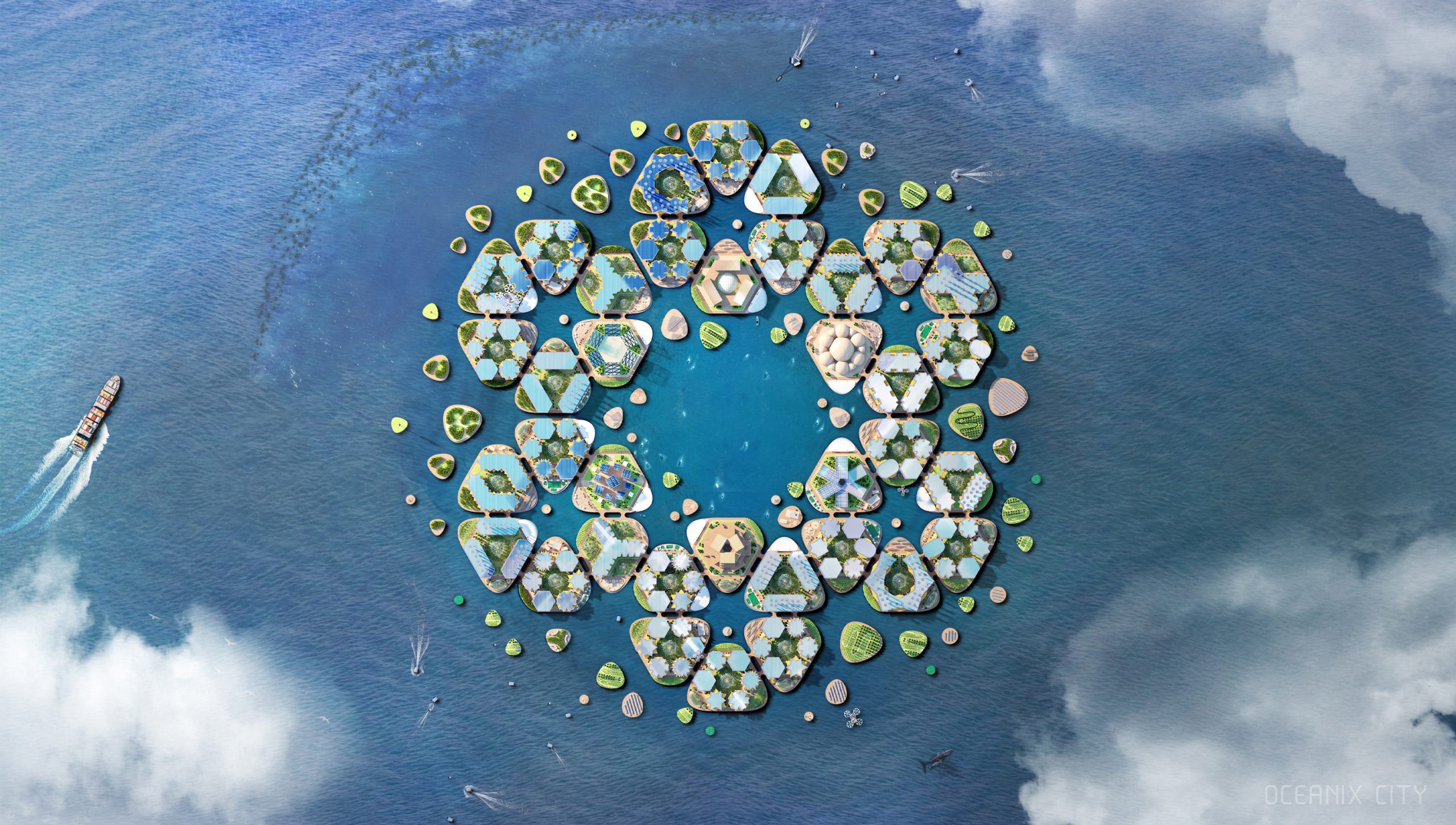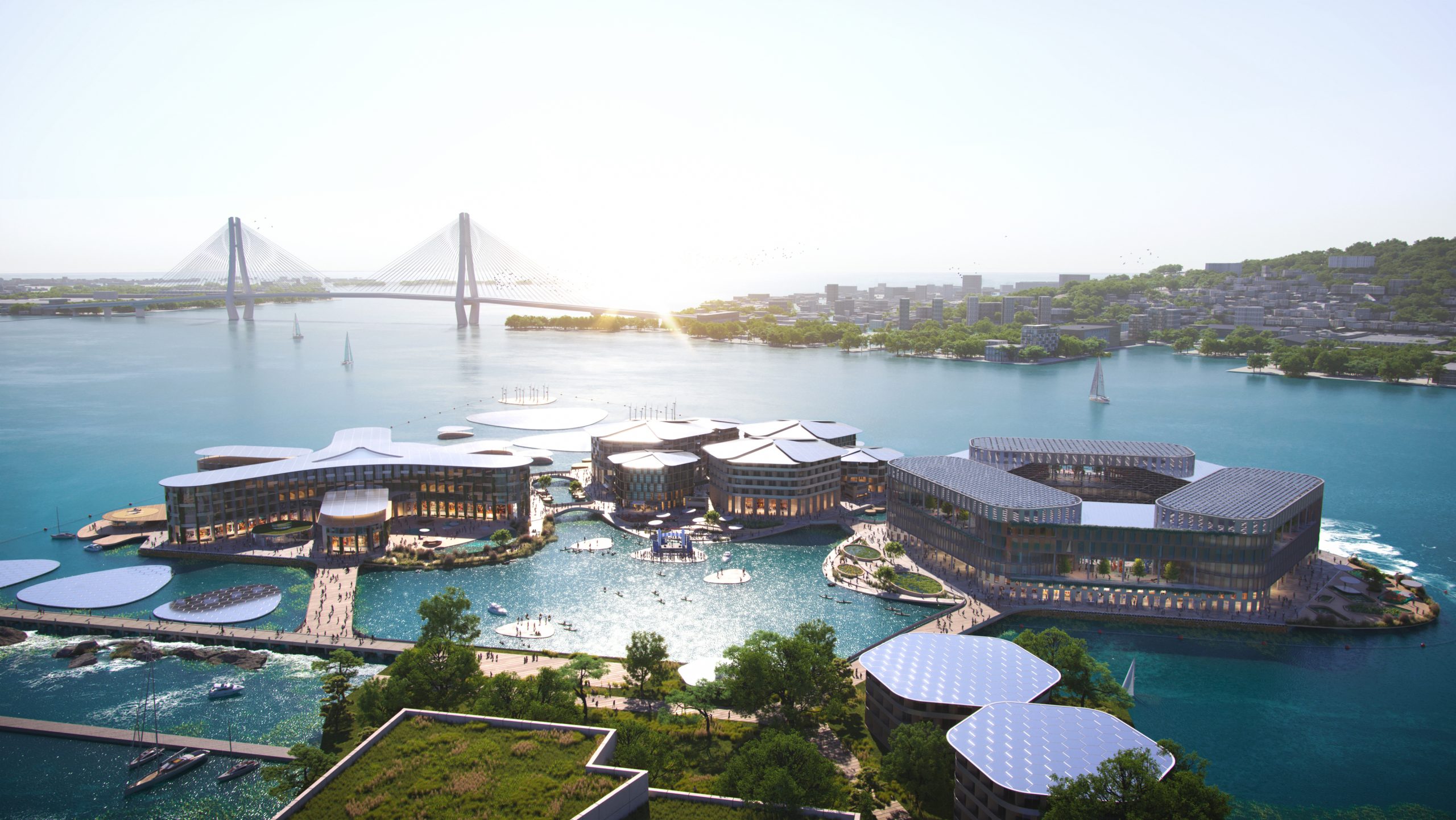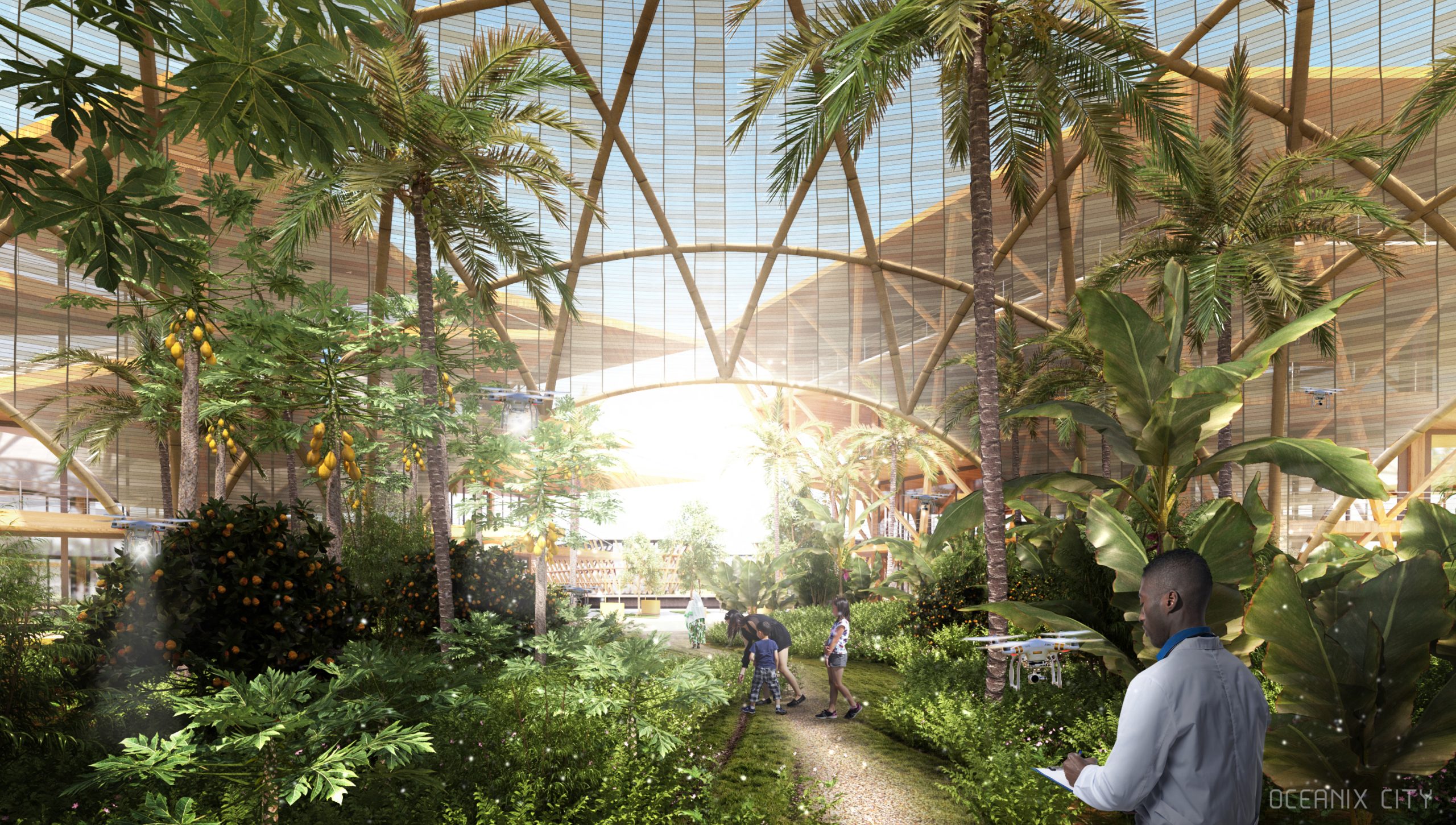Oceanix Busan – a Floating City Prototype

Billboard
Skyscrapper
Halfpage
UN-Habitat and partners unveil Oceanix Busan, the world’s first prototype floating city. Designed by BIG, the city provides breakthrough technology for coastal cities. Read more here.
A new model for coastal cities
Oceanix Busan is the world’s first prototype sustainable floating city. UN-Habitat, the Busan Metropolitan City of the Republic of Korea, as well as Oceanix run the project. The latter is a blue tech company specialised in floating cities. With Oceanix Busan, the partners want to provide an example for coastal cities that face severe land shortages. These are often compounded by climate threats at the same time. Floating cities can expand and also enhance coastal cities’ living space.
Two out of five people in the world live within 100 kilometres of the coast. In addition, 90 percent of mega cities are vulnerable to rising sea levels. Flooding destroys not only livelihoods, but also billions of dollars of infrastructure. Already, as seen in Pakistan’s recent flood catastrophe, there are millions of climate refugees forced to leave their homes. At the same time, rapid urban population growth in endangered cities like Kolkata, Dhaka, Mumbai, Lagos, and Bangkok forces poorer people to move closer to the water.
Busan’s Oceanix city will be the first of its kind. Similarly, other endangered areas, such as the Maldives, want to expand their area by providing floating cities. They place their hopes in housing and infrastructure located on floating pontoons. These are resilient to sea level rise and storms, thus providing a solution to climate change challenges. Oceanix wants to complete the floating expansion of Busan by 2025.

The architecture of Ocenix Busan
In 2019, the UN Roundtable on Sustainable Floating Cities decided to build a prototype for a floating city with a host city. In April 2022, lead architects BIG-Bjarke Ingels Group and Samoo (Samsung Group) consequently unveiled detailed plans for Oceanix Busan.
The new floating city will be an interconnected neighbourhood adding additional space to South Korea’s second largest city. Currently, 3.4 million residents live in Busan, an important maritime city known for marine engineering. Oceanix Busan will measure 6.3 hectares, accommodating a community of 12,000 people. Each neighbourhood on the floating city will serve a specific purpose, such as living, research, and lodging. Per neighbourhood, 30,000 to 40,000 square metres will be dedicated to mixed-use programmes.
Adaption over time
Oceanix Busan will connect to land with link-span bridges. Due to its location in a sheltered lagoon, the floating city will be able to withstand extreme weather events. At the same time, social sustainability is key: Each platform will host low-rise buildings with soft lines, terraces for indoor-outdoor living, and a network of public spaces.
Over time, the city will transform and adapt. Initially consisting of three platforms for 12,000 residents and visitors, Oceanix Busan can expand further to over 20 platforms. Productive outposts with photovoltaic panels and greenhouses can expand and contract over time based on the needs of the city. To achieve a circular economy, six integrated systems make up the city. These include zero waste, closed loop water systems, food, net zero energy, innovative mobility, as well as coastal habitat regeneration. The floating city will generate 100% of the required energy itself. Similarly, each neighbourhood will treat and replenish its own water, recycle its resources, and provide urban agriculture.
Medium Rectangle
Halfpage


Floating infrastructure as the way ahead
“Today is a pivotal milestone for all coastal cities and island nations on the frontlines of climate change. We are on track to delivering Oceanix Busan and demonstrating that floating infrastructure can create new land for coastal cities looking for sustainable ways to expand onto the ocean, while adapting to sea level rise,” said the Chief Executive Officer of Oceanix, Mr. Philipp Hofmann.
When unveiling the plans for Oceanix Busan in April 2022, the city’s mayor Park Heong-joon said: “As Mayor of the Metropolitan City of Busan, I take seriously our commitment to the credo ‘The First to the Future’. We joined forces with UN-Habitat and Oceanix to be the first to prototype and scale this audacious idea because our common future is at stake in the face of sea level rise and its devastating impact on coastal cities”. The mayor has set an ambitious agenda for Busan, including the goal to turn it into a smart green city and bidding for World Expo 2030.
According to Bjarke Ingels, Founder and Creative Director of BIG-Bjarke Ingels Group, the floating city in Busan will be a flagship project: “In designing a solution for the most vulnerable coastal locations on the frontlines of climate change, Oceanix’s new modular maritime neighbourhoods will be a prototype for sustainable communities informed by Busan’s unique juxtaposition of old and new. Creating a connection between the city and the seaside, Oceanix Busan will expand this spirit onto the waterfront”.

Oceanix Busan partners
Blue tech companies such as Oceanix are on the rise given the increasing demand for solutions in cities threatened by rising sea levels. Itai Madamombe and Marc Collins Chen founded Oceanix in 2018. In short, the company has the goal to build floating cities for people to live sustainably on the ocean. For Oceanix Busan, the company collaborated with famous designers, engineers, as well as sustainability experts to provide a flood-proof prototype.
UN-Habitat’s support is key to the Oceanix Busan prototype. The United Nations organisation works on promoting socially and environmentally sustainable cities and human settlements. The goal is to achieve a better quality of life for all in an urbanising world in line with Sustainable Development Goal 11. Currently, UN-Habitat works in over 90 countries “to promote transformative change through knowledge, policy advice, technical assistance, and demonstration projects”.
Read more about floating architecture and New York’s idea for a floating agricultural field.












